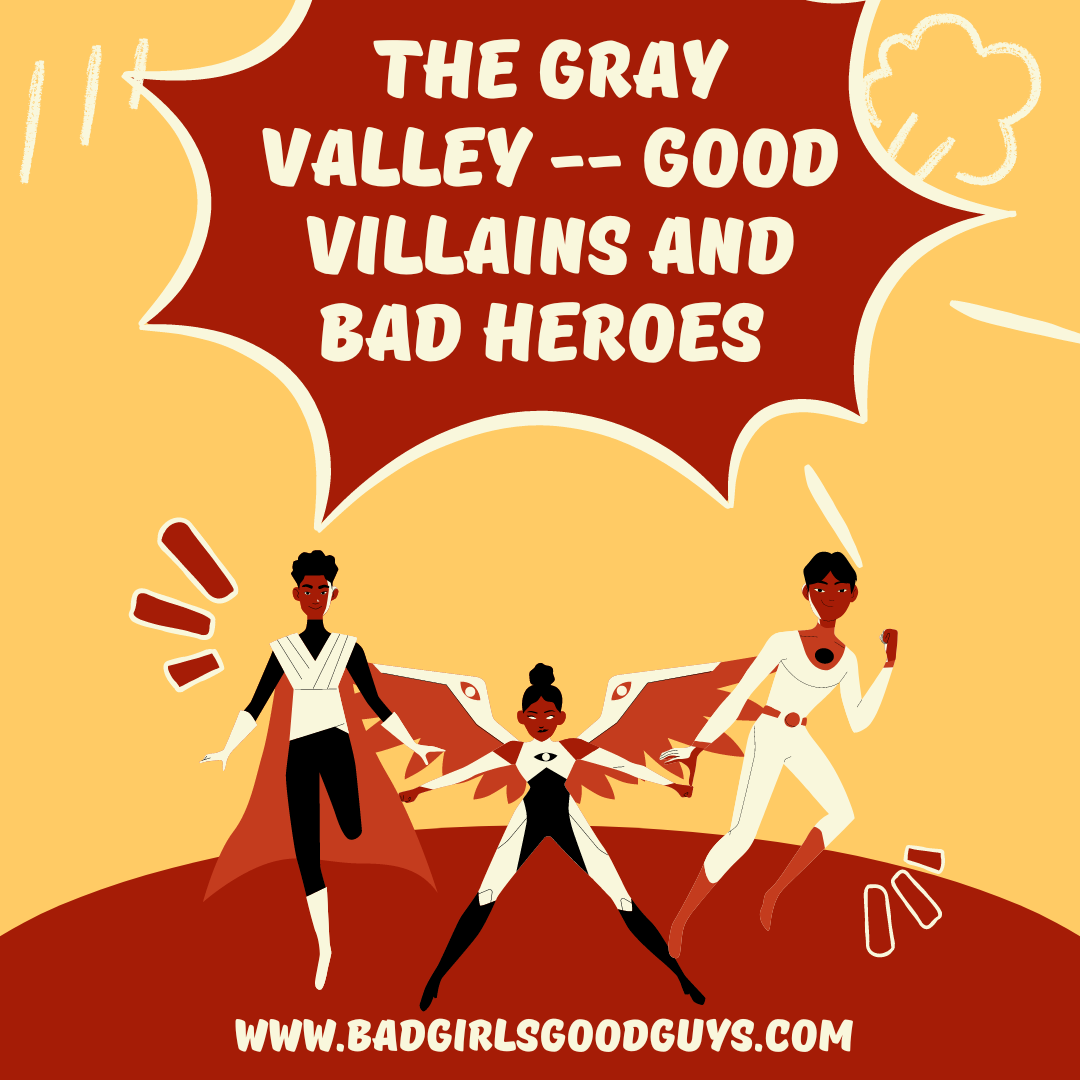The Gray Valley — Good Villains and Bad Heroes (A Roundtable)
We all know that for the most part, our characters are supposed to be fully fleshed out and multidimensional. That means we need heroes with things we don’t like and villains with traits we actually admire. But how do you do that?
What’s the danger of a hero who is solely heroic or a villain who is purely villainous?
Ef Deal: I would hope that writers take the time to study human nature enough to know that — outside of comic books and Marvel Universe — people are people. Once they become characters in a story, they require agency as well as fully formed humanity, with aspirations, plans, goals, and foibles. Doesn’t matter if they’re the pro or anti, hero or villain (I dislike those terms), they’ve got to be people first.
John L. Taylor: The danger of a purely “Lawful Good” hero is that it doesn’t leave room for internal conflict that leads to character development. It’s part of why Batman seems more relatable than Superman. Also, when the character is that rigidly good, they take on an authoritarian air that doesn’t sit well with the modern reader. As for the purely villainous “Chaotic Evil”: compare Thanos (the MCU version) to Jason from Friday the 13th. Both exist as avatars of death in their respective stories, but Thanos is also more relatable as he has some degree of moral ambiguity in his intentions. Heath Ledger’s Joker was another prime example of this. Vile intentions wrapped in a layer of social criticism and acute awareness of the corruption of those who believe they are the “good guys.” That’s solid story material there.
Read the full article:
https://seanhtaylor.blogspot.com/2023/05/the-gray-valley-good-villains-and-bad.html

